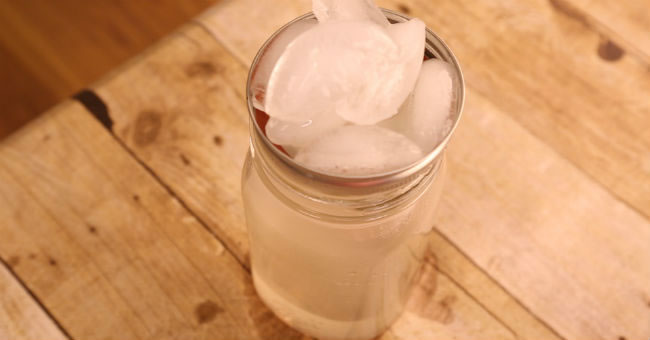
Encourage children to learn about the formation of clouds with this fun science activity. Clouds have a way of captivating both adults and children. They can resemble familiar objects, appear menacing as a storm approaches, enhance a beautiful sunset, and much more. Children can read about how clouds are formed and the different types of clouds, but you can supplement that knowledge by bringing this hands-on activity into your classroom! If you would like to extend the learning opportunities of this activity, pair it with Little Cloud to integrate language, literacy, and creativity.
How Do Clouds Form?
The clouds on Earth are made of drops of water too small to see. The liquid water from oceans, lakes, rivers, and streams evaporates and turns into water vapor. As the water vapor rises into the sky, the air gets cooler and the water vapor molecules condense and attach to particles to form clouds.
How Does the Cloud in a Jar Science Activity Work?
In this fun activity, the ice acts as the cooling layer of the atmosphere, and the hairspray provides particles for the water vapor to stick to as it condenses. After watching the cloud escape the glass jar, children will better understand how clouds are formed.
Download our FREE printable below!

Required Materials:
- Mason Jar with Lid
- 1 Cup of Hot Water
- Ice Cubes
- Hair Spray
Optional Materials:
1Prepare Jar
Pour one cup of hot water into a glass jar. Swirl the water around to heat up the sides of the jar. Immediately place the lid (upside down) on top of the jar to seal in the heat.
2Create the Cloud
Place several ice cubes on the lid of the jar. Let the ice sit for approximately 30 to 45 seconds. Quickly lift the lid (as little as possible) and spray in several bursts of hairspray. Put the lid back in place to seal in the vapors. After approximately 20 seconds has passed, lift the lid to release your cloud formation.
Include the Cloud in a Jar Science Activity in your classroom to provide creative opportunities for science discovery and play. Be sure to browse our list of science-related products, resources, and professional development.
